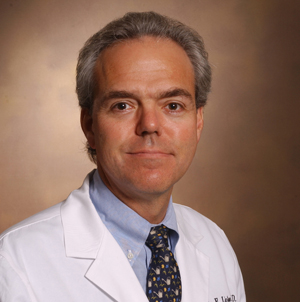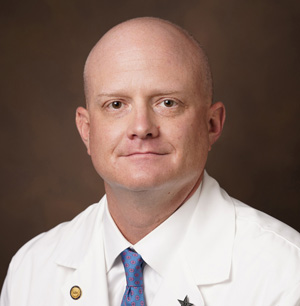Thanks to major funding from the National Institutes of Health (NIH), researchers at Vanderbilt University Medical Center have made major inroads in understanding how high-density lipoprotein (HDL), commonly known as good cholesterol, in some cases may actually contribute to the development of atherosclerosis.
But there is much to learn about what causes a loss of normal HDL function and how that can lead to atherogenesis, the formation of fatty plaques in the arteries, and increase the risk for cardiovascular disease.
Toward that end, the National Heart, Lung and Blood Institute of the NIH has renewed VUMC’s Program Project Grant (PPG), “HDL Function in Human Disease,” for another five years.

The competitive renewal of the grant (HL116263) will support four new projects led by MacRae Linton, MD, Sean Davies, PhD, Valentina Kon, MD, and Kasey Vickers, PhD, an expert on small RNA molecules (sRNAs) that are carried by lipoproteins including HDL. This year’s funding will total $2.6 million.
“Mounting evidence supports the concept that HDL function is a more important determinant of cardiovascular risk than HDL cholesterol levels,” said Linton, the PPG’s principal investigator. “Our ultimate goal is to target unique mechanisms that impair HDL function to develop new therapies for cardiovascular disease.
“The function of HDL particles is determined by the things that they carry,” he continued. “We are uniquely poised to investigate the impact of small RNAs carried by HDL on their function, as Dr. Vickers has developed a sophisticated bioinformatics pipeline to sequence and analyze these sRNAs.”
Linton, the Dr. Stephen Schillig Jr. and Mary Schillig Professor of Medicine and professor of Pharmacology at VUMC, directs the Atherosclerosis Research Unit and the Vanderbilt Lipid Clinic & Laboratory.

The grant renewal will enable Linton and his team to extend their investigations of the mechanisms for loss of HDL function in three diseases associated with an increased risk for atherosclerosis: familial hypercholesterolemia (FH), chronic kidney disease and rheumatoid arthritis.
FH is a common inherited form of high cholesterol in humans characterized by severely elevated levels of low-density lipoprotein (LDL, or “bad” cholesterol) and by an increased risk for early cardiovascular events including heart attacks and stroke.
Recent studies have shown that HDL function also is impaired in people with FH, and that HDL function is an independent predictor of atherosclerosis and cardiovascular events.
Although statins and LDL-lowering drugs can reduce the risk of heart attack and stroke in people with cardiovascular disease, there remains a residual inflammatory risk for these cardiovascular events, highlighting the need for additional therapeutic approaches. Dysfunctional HDL may contribute to this residual risk for cardiovascular events.

A key to improving treatment may be targeting highly reactive molecules called dicarbonyls that rapidly bind to the main HDL protein, apoA1, forming adducts that impair HDL function. Adduct formation has been linked to increased inflammation and immune cell activation, as well as plaque formation in arteries and cell death.
Dicarbonyls are produced through lipid peroxidation, a consequence of oxidative stress. Yet efforts to reduce oxidative stress with dietary anti-oxidants such as vitamins C and E have failed to reduce cardiovascular disease risk in most clinical trials.
Small-molecule scavengers that selectively react with — and disarm — dicarbonyls may offer a more targeted approach to blocking damage from oxidative stress.
Linton and his colleagues recently reported that two different small molecule dicarbonyl scavengers known by their acronyms 2-HOBA and PPM improve HDL function, reduce LDL oxidation, and dramatically reduce atherosclerosis in mice lacking the lacking the LDL receptor that have high cholesterol levels and other characteristics of human FH.
Recent Phase 1 clinical trials have demonstrated the safety of 2-HOBA in humans. The first project supported by the PPG, led by Linton, will study how scavengers react with dicarbonyls, and test whether 2-HOBA can improve HDL function in humans with and without FH.

Kon, the Margaret T. and H. Laird Smith Chair and professor of Pediatrics, will lead the second project, which will investigate how adduct-impaired HDL molecules in the intestine may accelerate cardiovascular disease in the setting of chronic kidney disease.
Vickers, associate professor of Medicine and of Molecular Physiology & Biophysics, will lead a third project examining how disrupted transfer of microbial sRNAs between HDLs and macrophages, a type of white blood cell, may increase inflammation in blood vessel walls.
The previous funding of this PPG led to the “the startling discovery that most of these sRNAs are not human in origin but come from microorganisms,” Linton said.
Vickers is internationally recognized for his studies of small non-coding RNAs carried by lipoproteins, including microbial sRNAs, which can increase expression of pro-inflammatory genes. He and his team will test whether various methods of preventing gene expression can inhibit the atherosclerosis progression.
Davies, associate professor of Pharmacology, will lead the fourth project, which will study whether HDL dysfunction induced by reactive dicarbonyls reduces the clearance of atherosclerotic lesions by macrophages, thereby increasing the risk of heart attack and stroke.
The Program Project Grant will also support an administrative and biostatistics core and lipoprotein and HDL function core, both led by Linton, a chemical synthesis and lipid peroxidation analytical core led by Davies, and a non-coding RNA analytical core led by Vickers.
Project and core co-investigators include Ryan Allen, PhD, Amanda Doran, MD, PhD, David Harrison, MD, C. Michael Stein, MBChB, and Patricia Yancey, PhD, in the Department of Medicine; and Quanhu Sheng, PhD, and Fei Ye, PhD, MPH, in the Department of Biostatistics.
Harrison is director of the Division of Clinical Pharmacology and Betty and Jack Bailey Professor of Cardiology, and Stein is Dan May Chair and professor of Medicine and Pharmacology.












